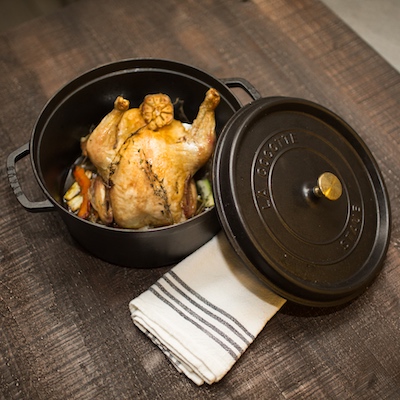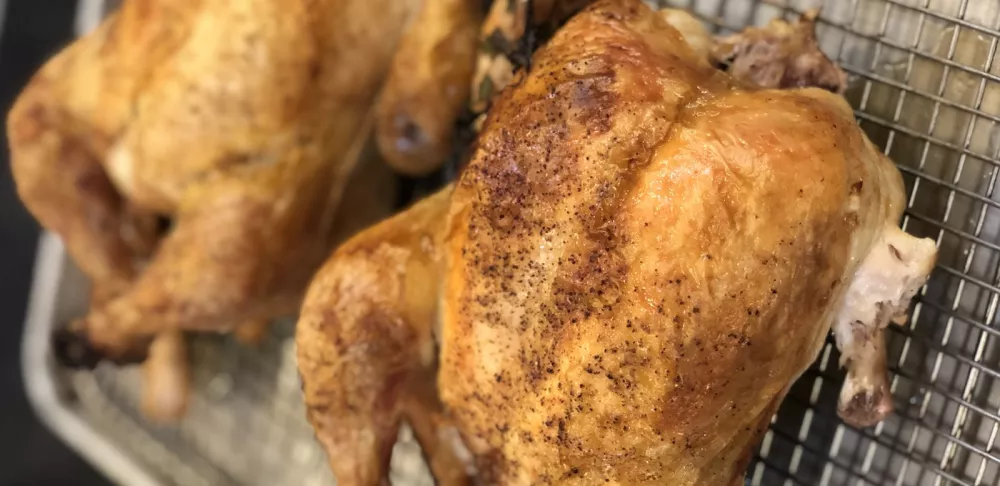If there is one thing that our Los Angeles campus president, Chef Lachlan Sands, appreciates when it comes to poultry, it is crispy chicken skin. There are culinary techniques to ensure crispiness and avoid a moist or rubbery texture. We asked him his top tips to achieve properly crispy sautéed or roasted chicken.
Start with a hot pan.
If you are sautéing, put the chicken skin side down in the pan in a little bit of oil — and be aware of the temperature of the pan. “If the pan is only medium, it’s going to render out the fat behind the chicken skin without crisping it,” Chef Lachlan explains. “The heat in your pan is actually a huge part of it when you’re sautéing chicken — it has to be medium-high heat.”
Let it be.
It is very tempting to want to see what is happening to your chicken’s skin, but Chef Lachlan warns, “Don’t futz with the chicken. Once it goes into the pan, leave it alone until it naturally lifts off the pan,” he says. “If you start lifting it and putting it back, it retards the Maillard reaction and you end up with fully cooked chicken, without fully crispy skin.”
Dry your bird.
Whether sautéing or roasting, the bird’s skin must be dry before cooking. “People put butter on the chicken skin with the idea that it’s going to help it become crispy — it doesn’t,” he laments. “It helps the skin to go brown because the solids in the butter brown, but it doesn’t make it crispier.” Instead, he recommends using vegetable oil after thoroughly drying your bird. “Put a little schmear of vegetable oil and because there is no water in it, the heat from the oven immediately begins to crisp up the skin and you don’t end up with steam coming off the skin,” he says.

Slow and steady when roasting.
“Some people will start with the oven super-hot, at about 500˚F, and then they will turn it down to 375˚F after the chicken goes in,” Chef Lachlan explains. “When the temperature drops, the fat under the chicken skin continues to render, but the chicken skin doesn’t gain a lot more color during the next hour or so. If you stick the chicken in the oven at 375˚F and you’ve got it all set up properly and nice and dry, it’s going to end up being really, really crispy.”
Check for the right color brown.
“Normally we look at that beautiful golden brown color for fried things. Golden brown is delicious, but it’s darker than that,” Chef Lachlan advises. “It’s almost a chocolate brown when you’re thinking of roast chicken.” Do not be fooled by your oven’s poor lighting. “Sometimes the oven is a little darker and people will pull the chicken too early,” he says. Check to see the color 10 minutes before you expect the chicken to be done with the given recipe. “If it is not done, turn the temperature up by 25 degrees and finish it in a hotter oven.”
Watch for crispy fried chicken:
Learn how to properly prepare every major protein in Culinary Arts.




